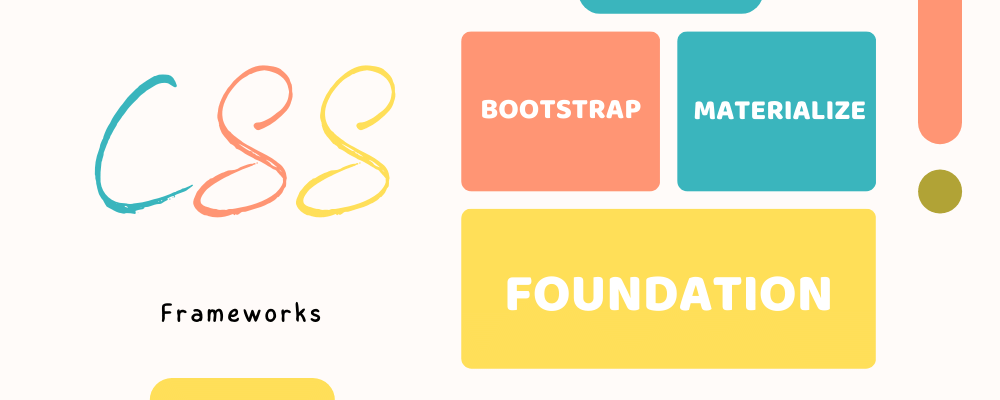Table of Contents
As a front-end developer, creating responsive and visually appealing web pages is a critical aspect of your job. CSS frameworks have gained tremendous popularity in recent years, thanks to their ability to simplify and streamline the development process. In this guide, we’ll provide a comprehensive overview of CSS frameworks and explain how to choose the right one for your project. We’ll also discuss best practices for using CSS frameworks, customizing them, and optimizing your workflow.
What are CSS Frameworks?
CSS frameworks are pre-built libraries of CSS styles and layouts that can be used to design and develop web pages. These frameworks provide a consistent and standardized way of writing CSS, reducing development time and making it easier to create responsive and visually appealing web pages. Some of the most popular CSS frameworks include Bootstrap, Foundation, and Materialize.
Using CSS frameworks comes with many benefits. For instance, they offer a more efficient and streamlined development process, allowing developers to focus on creating custom features rather than starting from scratch. Additionally, they help ensure consistency across web pages by providing a set of standardized styles and layouts. Finally, CSS frameworks are usually responsive, meaning they provide a consistent look and feel across different devices.
Choosing the Right CSS Framework for Your Project
When choosing a CSS framework for your project, there are several factors to consider. First, consider your project’s design goals and overall aesthetic. Some frameworks are more geared towards a specific aesthetic or design style. Additionally, consider the skill level of your development team, as some frameworks may be more complex or require more advanced skills. Finally, think about the project’s complexity and whether a particular framework can support its functionality.
There are many CSS frameworks available, each with its own set of features and advantages. For instance, Bootstrap is a popular choice for its wide range of features and extensive documentation, making it an excellent choice for larger projects. Foundation, on the other hand, is known for its flexibility and customizability, making it a popular choice for designers who want to create a unique look and feel. Materialize is another popular framework that provides a sleek and modern design aesthetic, making it an excellent choice for projects that require a more polished look and feel.
Getting Started with CSS Frameworks
Once you’ve selected a CSS framework for your project, it’s time to get started. The first step is to install and set up the framework. Most frameworks offer installation instructions on their website, which may include downloading and including CSS and JavaScript files in your project. Once you’ve set up the framework, you can begin using its pre-built styles and layouts to create web pages.
A good way to get started with CSS frameworks is to use them to create basic page layouts, such as headers, footers, and sidebars. Most frameworks provide a set of pre-built classes and components that can be used to create these layouts quickly and easily. Additionally, it’s important to keep your code organized and use responsive design principles when creating web pages using a CSS framework.
Customizing CSS Frameworks
One of the benefits of using a CSS framework is that it provides pre-built styles and layouts that can be customized to match your project’s unique design and branding. To do this, you can use a combination of CSS overrides, mixins, and variables to modify the framework’s default styles.
When customizing a CSS framework, it’s important to maintain the integrity of the framework while still creating a unique look and feel for your project. One way to do this is by using mixins, which are pre-built pieces of code that can be used to apply custom styles to elements in the framework. Additionally, it’s essential to test your customizations across different devices and browsers to ensure they are compatible
with your project’s requirements.
Best Practices for Using CSS Frameworks
When using CSS frameworks, there are several best practices to keep in mind to ensure optimal performance and a streamlined development process. First, it’s important to only include the components and styles that are necessary for your project to minimize the file size and improve load times. Additionally, it’s important to keep your code organized and well-commented to make it easier to maintain and update in the future.
Another best practice is to use version control to manage your project’s CSS files. This allows you to keep track of changes and roll back to previous versions if necessary. Finally, it’s essential to stay up-to-date with the latest releases and updates of your chosen CSS framework to take advantage of new features and bug fixes.
Conclusion
CSS frameworks have become an essential tool for front-end developers, providing a streamlined and efficient way of creating visually appealing and responsive web pages. By choosing the right framework for your project, customizing it to match your unique design goals, and following best practices, you can create high-quality web pages quickly and easily. Whether you’re a beginner or an experienced developer, incorporating CSS frameworks into your workflow can help you save time and create more visually appealing web pages.

